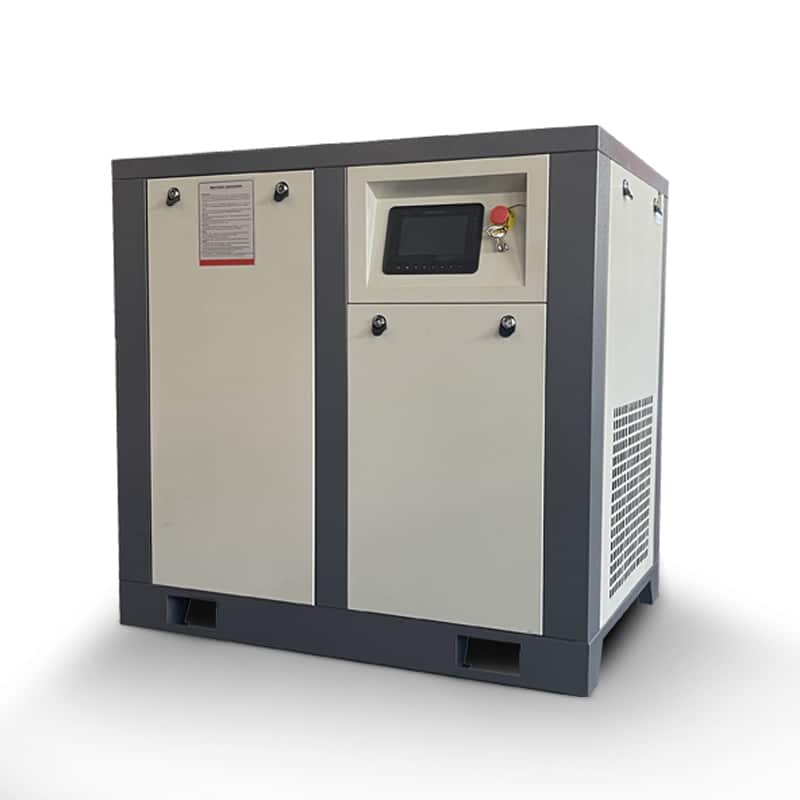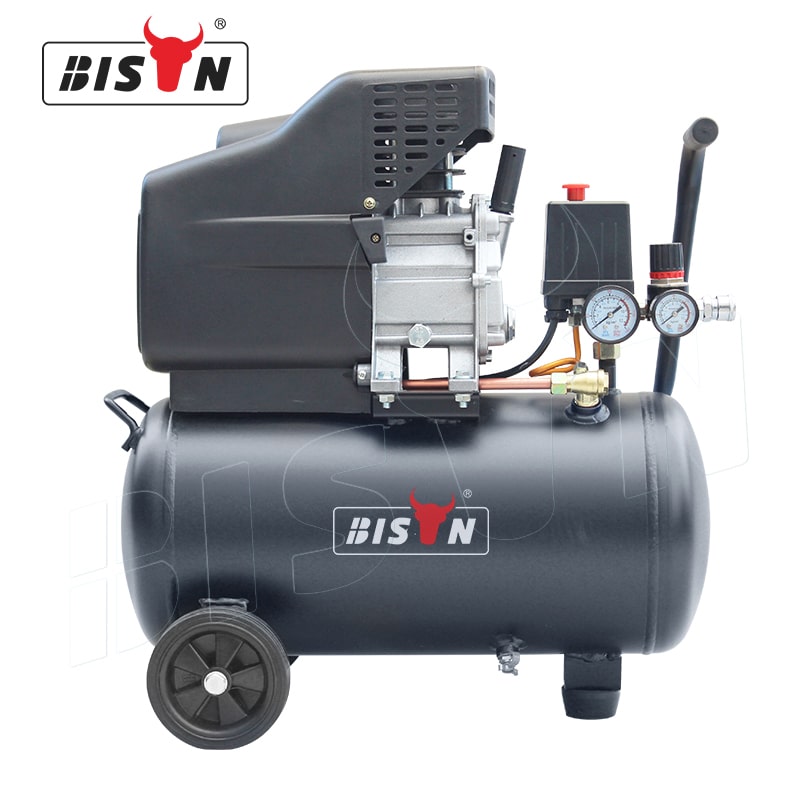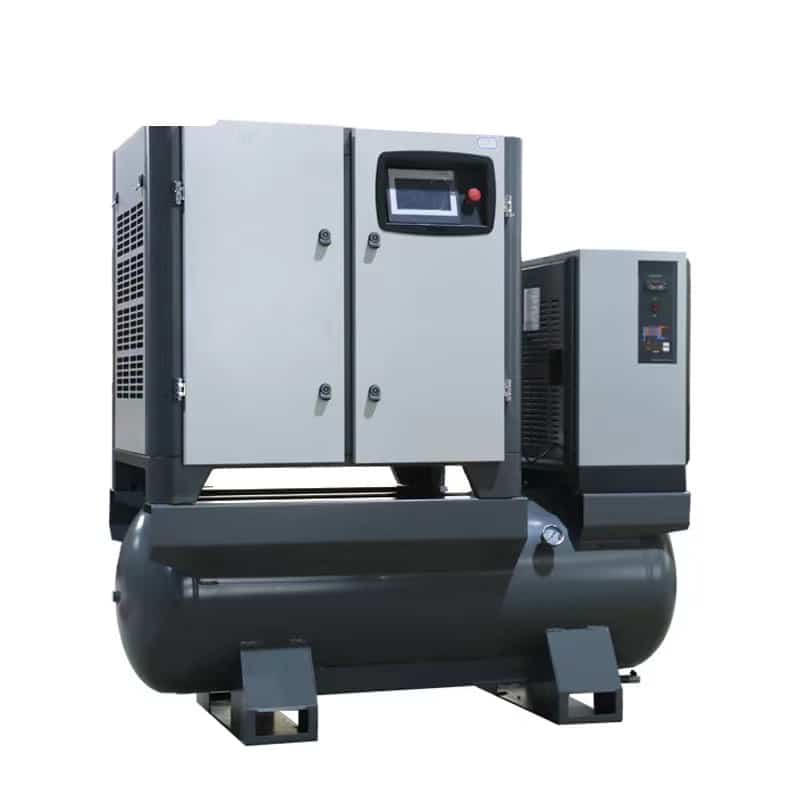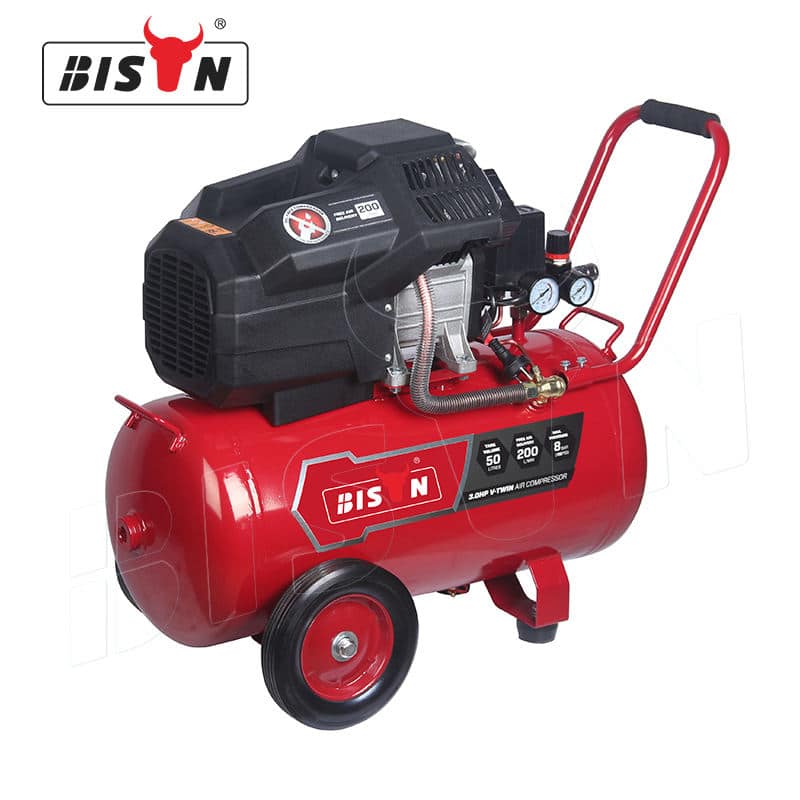air compressor blog
difference between psi and cfm
- Apr 21, 2023
CFM and PSI are performance specifications for air compressors. Together, they represent the maximum air volume and pressure produced by the air compressor when powering the air tool. To better understand the difference between CFM and PSI, let’s know what they mean.
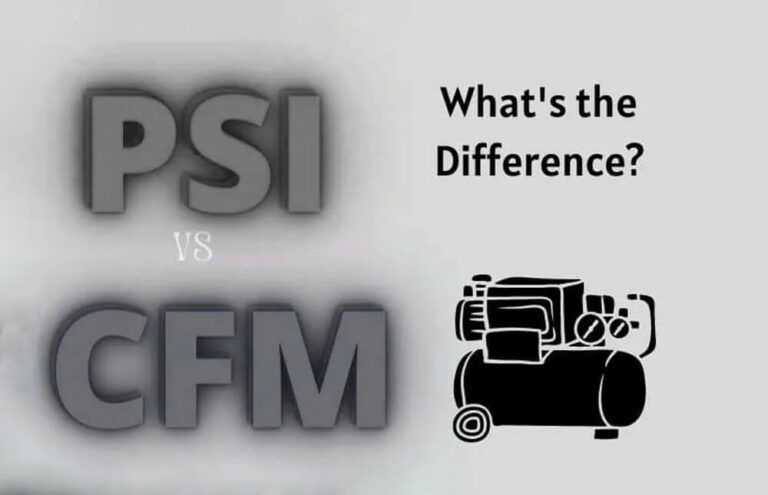
What does PSI mean?
The abbreviation PSI stands for pounds per square inch. PSI measures how many pounds of pressure (force) there is on an area, specifically one square inch. The power of air gives compressed air its power. For example, an air compressor rated at 100 psi delivers 100 pounds of pressure per square inch.
What does CFM mean?
CFM is simply cubic feet per minute. It measures the volume of air moved per minute in cubic feet. For an air compressor, CFM means how much air it can move per minute. For example, an air compressor with a rated output of 30 CFM means that 30 cubic feet of air moves per minute.
What’s the relationship between CFM and PSI?
CFM and PSI are related in meaningful ways to ensure the proper operation of air tools. CFM and PSI must be sufficient for an air tool to run and perform optimally.
Let’s look at a real example to help understand the relationship between CFM and PSI:
Suppose you have a garden hose, and you turn it on. Water will come out and may extend several feet beyond the end of the hose, perfect for filling a bucket or watering a can.
However, if you take the garden hose and use your thumb to restrict the space at the end of the hose to leave less room for the water to escape, the water will spray out with more pressure than before. So even with the same amount of water coming out of the hose, the extra pressure will make the water flow faster and farther, perfect for water fights!
We hope this hose example is relevant. Although the example uses water to describe the relationship between CFM and PSI, the concepts are the same for air.
Consider the second real-life air example:
There is a tunnel that the wind blows through, and the tunnel gets smaller and smaller. As the wind blows into the tunnel, the feeling grows stronger as you navigate the ever-shrinking space. Although the air volume (CFM) remains constant throughout the tunnel, the air is squeezed into a tighter space, causing the pressure (PSI) to increase.
Both examples above share the relationship between PSI and CFM. When using an air compressor, it is critical to have enough CFM (volume of air) to power the air tool and enough PSI (pressure) to power the air.
What size air compressor do I need to operate my air tools?
Now you understand the difference between PSI and CFM, you might wonder how to ensure you have a suitable air compressor to run your air tools.
The easiest and quickest way to do this is to check your air tool’s air requirements, including CFM and PSI, and ensure the air compressor you choose meets those requirements.
However, there is more to consider than simply matching the CFM and PSI of your tool to your air compressor. Whether you use air receivers, screw air compressors, or reciprocating air compressors, the details of your application will also affect your CFM and PSI needs.
Common Air Tools and Their CFM and PSI Requirements
- Air nailers are the most common air tools. They use CFM to determine how much air they need to run at maximum power, so you need to know what kind of nails or staples you are using.
- Ratchets and impact wrenches use PSI as a power measurement, so check your tool manual to see what PSI it requires before buying any accessories for it.
- Air drills are another common power tool that use CFM instead of PSI, but if all you need is an impact driver attachment for a cordless drill (which has its own setting requirements), you don’t need to worry about that.
- Sanders and polishers need a lot of CFM and PSI depending on the kind of material being sanded/polished – more CFM if it’s softwood, more pressure if it’s hardwood
Conclusion
When operating your compressor system, don’t take any chances. It is essential to ensure that the system’s pressure (PSI) and flow (CFM) match the specific application’s needs. Inconsistencies in compressor sizing and application needs can lead to high costs and energy usage and negatively impact the service life of your compressed air system.
If you doubt the pressure or flow required for a given application, consult a BISON air compressor professional for expert guidance.
frequently asked questions about difference between psi and cfm
How do I determine what CFM air compressor to purchase?
When determining the CFM of the air compressor you should purchase, you need to consider several key factors. The first thing to consider is the size and type of tool you will use with the compressor.
Some industrial air compressors are designed to provide maximum power to extensive industrial tools, while others may be better suited for small DIY projects. Another critical factor is the space available in your workshop or garage to install and store your air compressor.
Next, consider what kind of work you will use the compressor for. Higher CFM ratings are usually required for tasks like sanding or painting to get good results.
Also, consider how much noise you are willing to tolerate from your air compressor. A higher CFM rating generally means a louder and more powerful machine, so ensure it's in the best range for your and your project's needs.
Finally, it's also important to consider your budget, as more powerful compressors usually cost more. Considering these factors, you can find a suitable CFM air compressor and get the most out of this helpful power tool.
How to increase the PSI of the belt driven air compressor?
You can increase the PSI by changing the pulley size. Increasing the pulley size will result in a higher PSI because the compressor will run faster. Conversely, reducing the pulley size will lower the PSI because the compressor will run slower. It is essential to ensure you use the correct size pulley to avoid damaging the compressor.
The diameter of the pulley can change the PSI in the air compressor because the more effective the diameter of the pulley, the more torque is required to turn it. This means the motor will have to work harder to turn the pulley, creating a higher PSI in the compressor. Smaller pulleys create more drag and increase PSI, while larger pulleys decrease PSI.
This is helpful for businesses that use large amounts of compressed air, such as factories or construction sites. Improving PSI can help increase the efficiency of these businesses.
If you have any enquiries about the BISON air compressor, we would love to hear from you.

